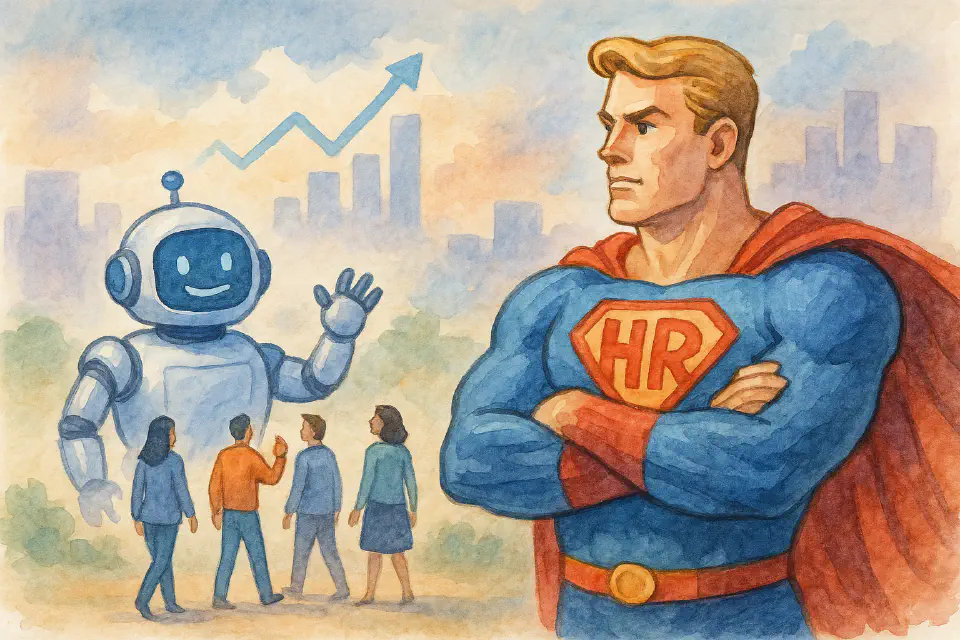
The AI Workplace Revolution: What HR Leaders Must Act on Now
The AI wave isn’t coming—it’s already here. But while the tech moves fast, most HR teams are still playing catch-up. Here’s what to do now, before it’s too late.
The AI Workplace Revolution: Where HR Must Step In
If you’re waiting for a roadmap on AI in the workplace, here’s the truth: there isn’t one. Not yet. The tech is evolving faster than most organizations can absorb it—and HR is caught in the middle.
From legal landmines in hiring tech to urgent upskilling needs and messy project failures, HR leaders have a narrow window to move from reaction to readiness. This isn’t about staying ahead of the curve. It’s about staying relevant.
Here’s what you need to focus on—now.
1. Compliance in AI Hiring Is No Longer Optional
Let’s start with the most urgent piece: regulation. AI-assisted hiring is already under fire, and HR is on the front line.
Case in point? A recent lawsuit filed against Workday alleging age discrimination driven by its AI screening tools. Add to that evolving laws in states like New York and Illinois, and the message is clear: compliance isn’t a checkbox—it’s a brand risk.
What to do:
- Review how AI is currently used in your hiring stack.
- Map legal requirements in your jurisdictions (especially if you hire across state or national borders).
- Implement regular audits and include DEI and legal partners in your procurement processes.
- Get familiar with algorithmic bias risk—and mitigate early.
2. The Skills Gap Is Widening—Fast
According to AWS, 73% of employers now prioritize AI-related skills in hiring. But most HR teams lack a clear plan to address internal readiness.
So what’s the blocker?
- Lack of executive alignment
- No clear mapping of roles at risk or opportunity
- Reskilling that isn’t aligned with business strategy
What to do now:
- Start by identifying roles likely to be impacted or augmented by AI.
- Develop tiered learning paths—from awareness to advanced fluency.
- Collaborate with L&D, business unit heads, and IT to embed learning into real workflows.
Don’t just “train.” Build capability that’s visible, relevant, and connected to mobility and succession.
3. Why AI Projects Keep Failing
Up to 80% of AI projects fail—often due to outdated approaches to project design and delivery. Many companies treat AI like any other tech implementation. It’s not.
AI needs more than agile. It requires hybrid project management that includes:
- Data governance and model validation
- Change management from day one
- Multi-stakeholder input across HR, IT, and business
What to change:
- Shift from “build it and they’ll come” to “co-create, test, iterate”
- Combine agile sprints with structured decision checkpoints and risk reviews
- Ensure HR has a seat at the table—not just for adoption, but design
4. Ethical Use of AI Must Be a Leadership Priority
Only 1 in 5 organizations using generative AI have formal policies. That’s a gap you can’t afford.
Ethical failures don’t just result in lawsuits. They corrode trust, damage DEI efforts, and undermine psychological safety.
Here’s what HR can do:
- Lead creation of cross-functional AI ethics councils
- Include ethical considerations in all AI vendor assessments
- Train teams on responsible use—not just functionality
- Embed transparency, explainability, and fairness in your AI playbook
Ethics isn’t a “soft” topic. It’s your license to operate.
Final Recommendation
The AI revolution is not a future state—it’s already here. But it’s not just about automation or tools. It’s about how your organization adapts, protects, and grows.
HR has a critical role to play: to set the guardrails, close the skills gap, and lead with purpose.
Start with three questions:
- Where are we most exposed to AI risk?
- Who is accountable for AI governance today?
- What will it take to make AI safe, fair, and effective in our organization?
Because if HR doesn’t step up, someone else will—and they may not be thinking about compliance, culture, or people.
This is our moment to lead. Let’s not miss it.